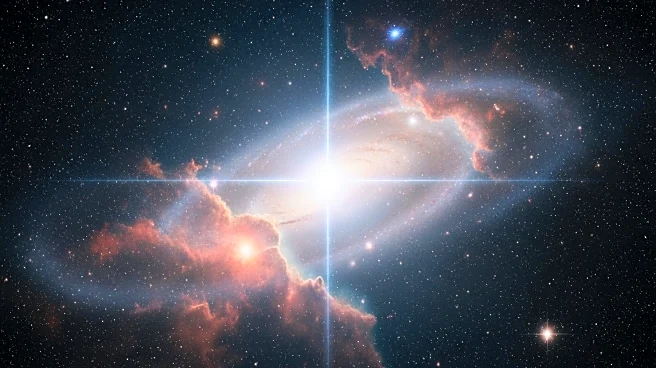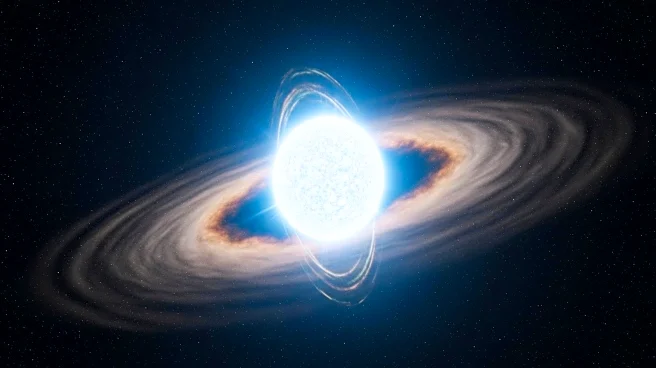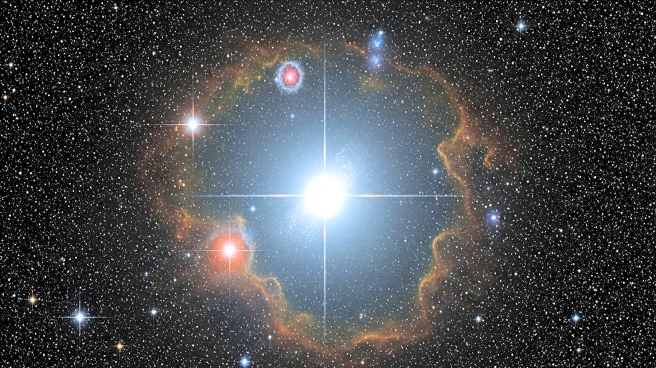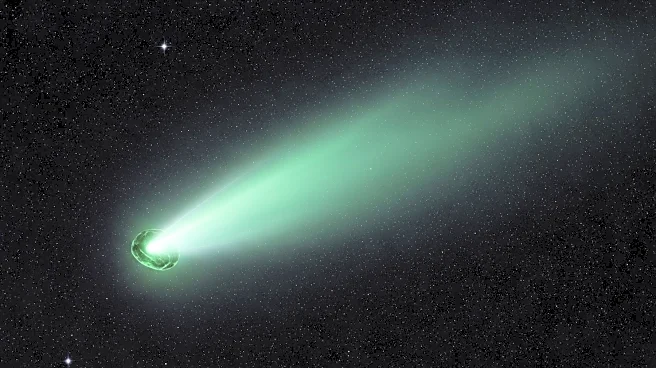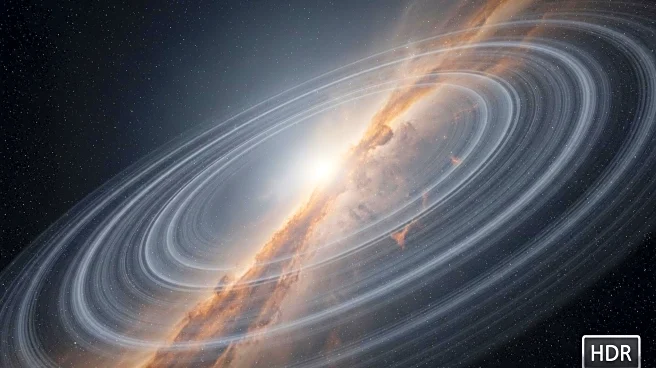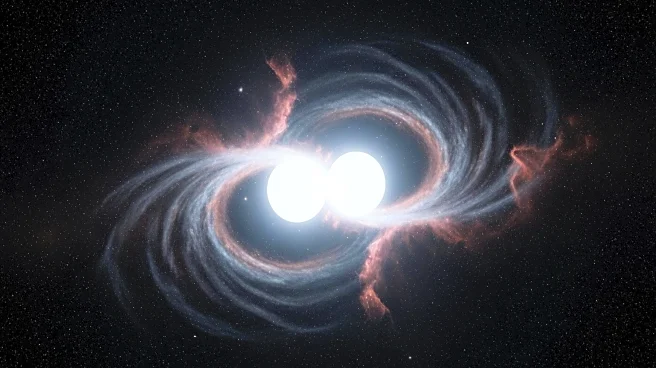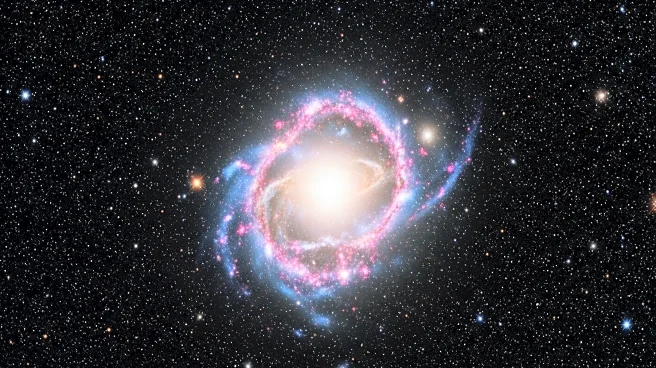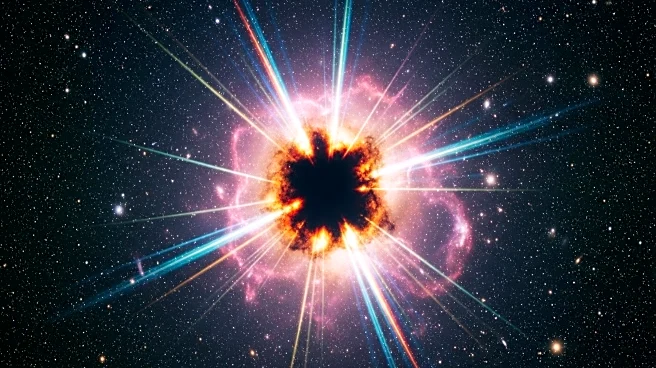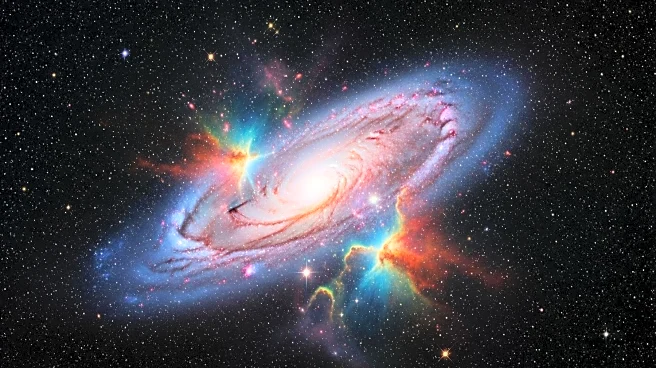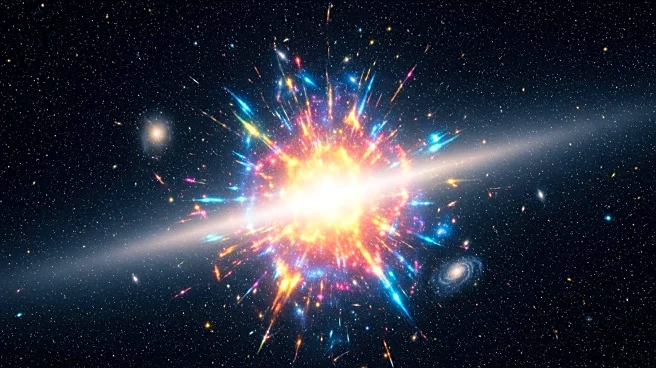What's Happening?
An international team of astronomers has discovered that the V Sagittae star system, located approximately 10,000 light-years from Earth, is undergoing a unique cosmic event. The system consists of a white dwarf star and its larger companion star, which are locked in a close orbit. The white dwarf is consuming material from its companion at an unprecedented rate, causing the system to shine exceptionally bright. This process is expected to culminate in a massive explosion, potentially visible from Earth with the naked eye. The findings were made using the European Southern Observatory's Very Large Telescope in Chile and have been published in the Monthly Notices of the Royal Astronomical Society.
Why It's Important?
The discovery of the V Sagittae star system's impending explosion provides significant insights into stellar evolution and the life cycles of binary star systems. Such events are rare and offer a unique opportunity for astronomers to study the processes leading up to a supernova. The potential visibility of the explosion from Earth could also engage the public's interest in astronomy and space science. Understanding these cosmic phenomena can help refine models of stellar behavior and improve predictions of similar events in the future.
What's Next?
Astronomers will continue to monitor the V Sagittae system closely to capture the anticipated explosion. This event could provide valuable data on the dynamics of binary star systems and the mechanisms driving such explosive phenomena. The scientific community is likely to focus on gathering as much observational data as possible to enhance our understanding of these rare cosmic events.
